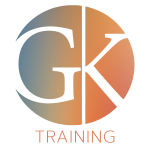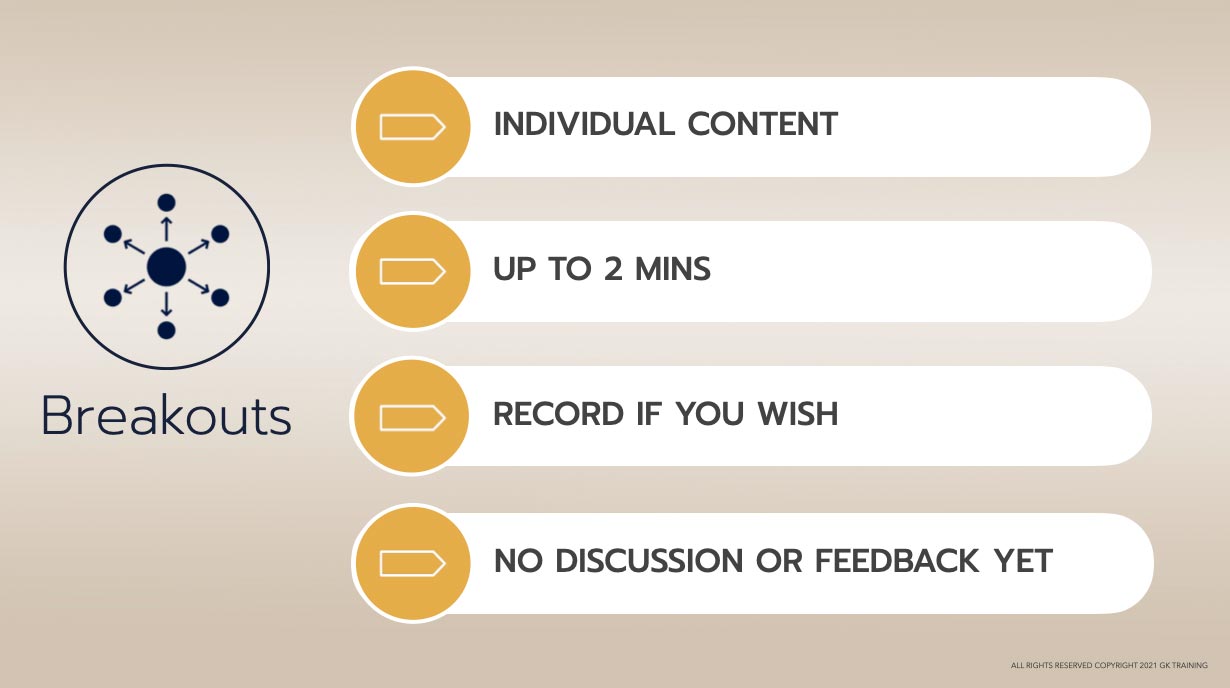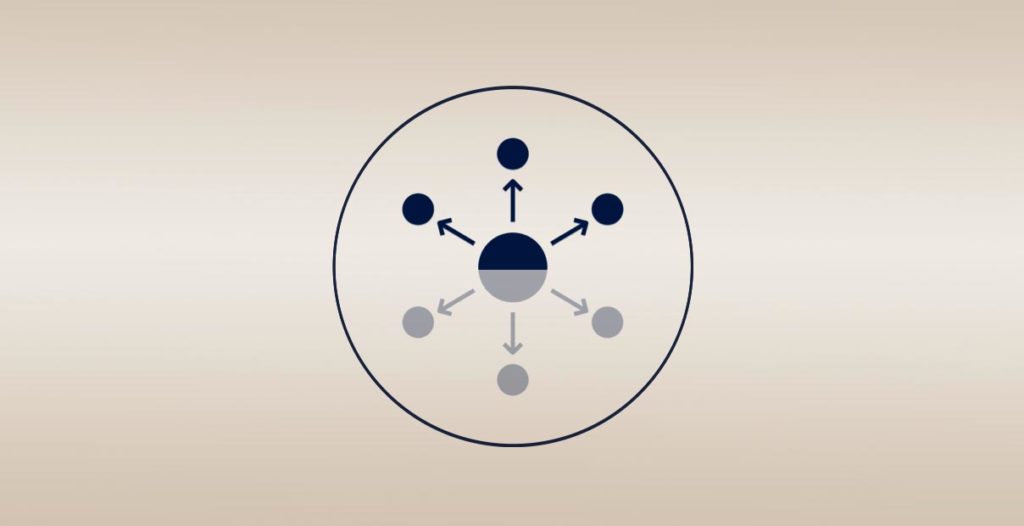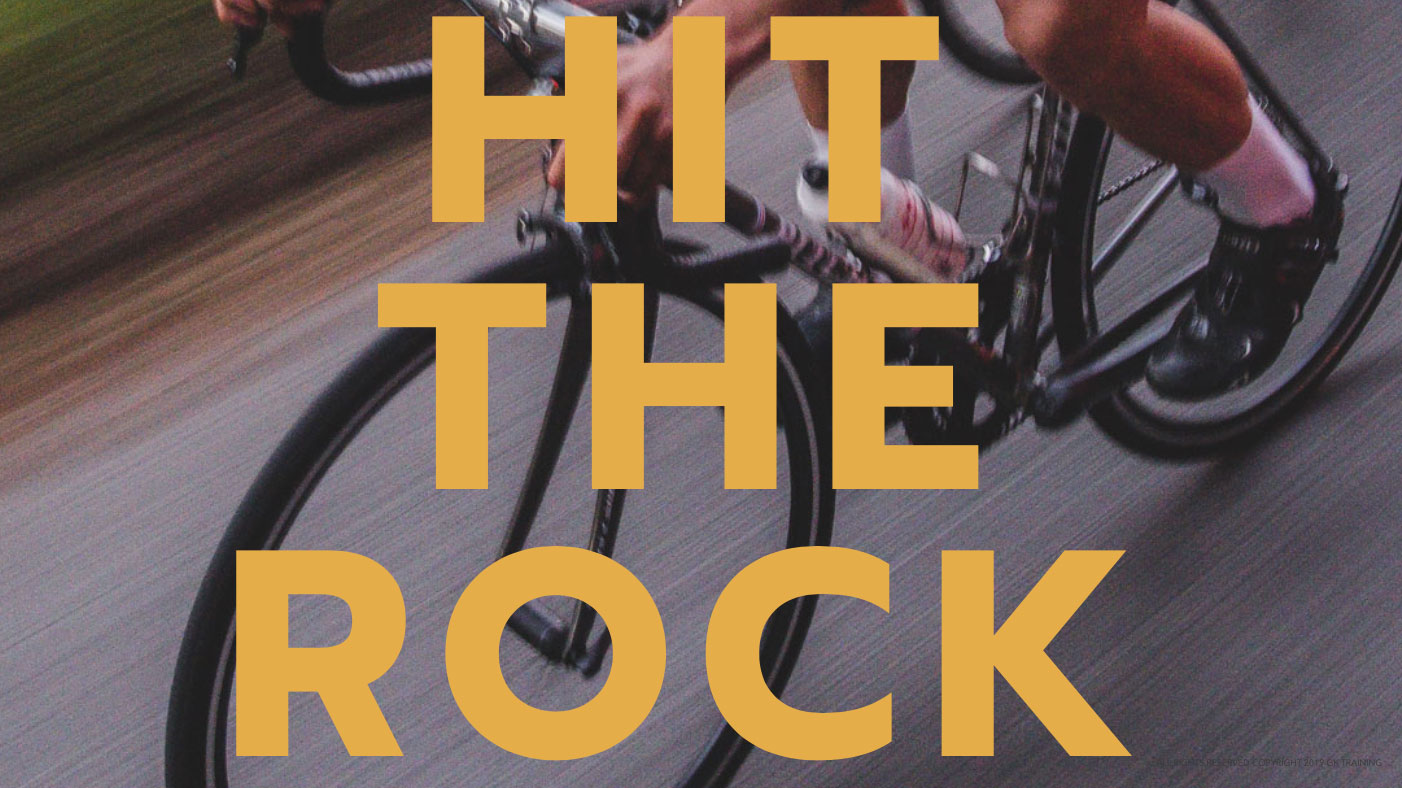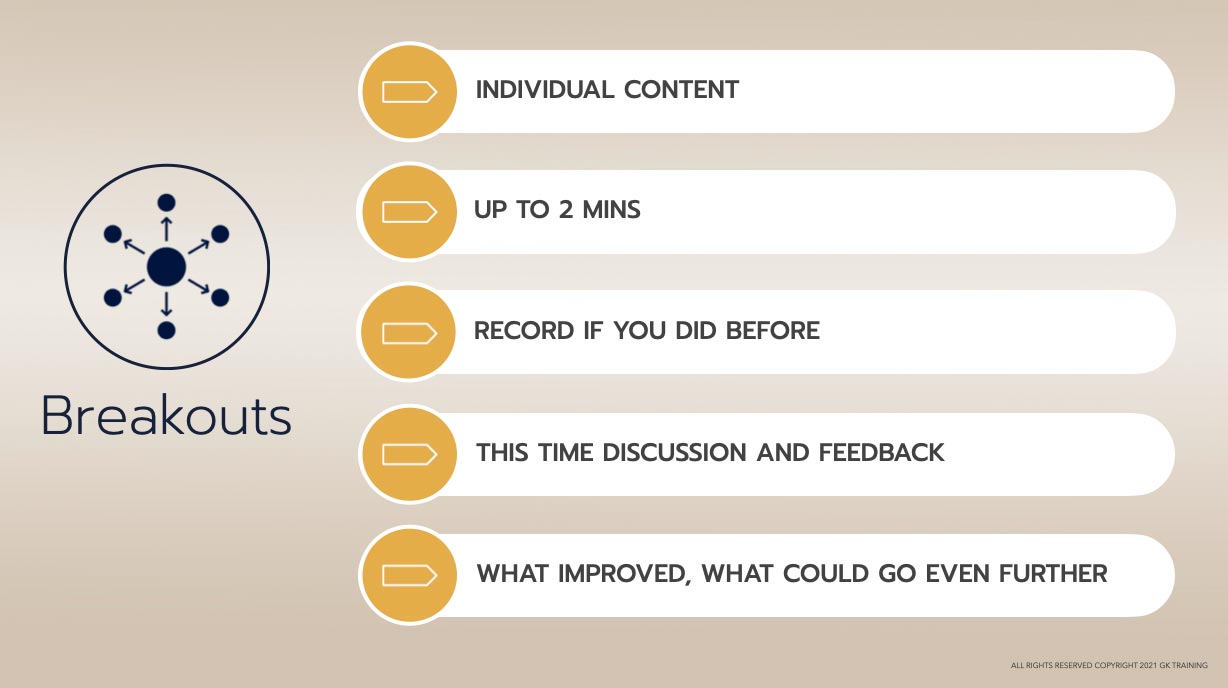
WOMEN'S EXECUTIVE PRESENCE
Opus: Advice First
In Person Workshop
PROPOSAL
RUN OF SHOW
The run of show below outlines the customized program GK Training can deliver for Opus: Advice First. It offers background info and deep dives into the subject matter for each component of the session. Feel free to click on the links in the various categories to explore our curriculum, methods, and techniques.
Women's Executive Presence: Agenda & Curriculum
IN PERSON WORKSHOP
WELCOME
WHY: Learners need a clear moment of embarkment, and a roadmap to know where they’re going and why.
ACTIVITY: The session begins with a moment of surprise and story-telling to engage. We set expectations and cover the agenda so participants feel comfortably in the hands of a trustworthy narrator and challenged by the session’s ambition. We emphasize how the day will equip the learners with new skills that are highly relevant to them, and explicitly give them permission to get feedback and support from those around them.
VIRTUOUS CYCLE OF GOOD COMMUNICATION
WHY: Both what you say and how you say it are important, and they’re connected — in ways that are obvious…and not so obvious.
HOW: We consider the relationship between Content and Delivery. While communication training typically examines (and even debates) the ratio of which matters more, we focus on how to unlock a virtuous cycle in which better delivery actually unlocks better content.
CONTEXT:
See how our training helped Kenji use the Virtuous cycle to Eliminate “ums” and “urs”
LEARN MORE:
Watch a quick primer on the definition of the Vicious and Virtuous Cycles of Communication.
BREAKOUT 1
(Baseline)
HOW: Learners establish a baseline by presenting to their colleagues in breakout groups of six or less.
ACTIVITY: Each participant has opportunity to deliver the pre-work; each participant gets equal time. (Note: for the first breakout there is no peer feedback.)
THREE SURPRISES
HOW: Participants learn GK’s three suprises about good communication: 1. it comes from using more of yourself, not less; 2. it comes from being focused on the other person; 3. you do not need to feel confident to project confidence.
ACTIVITY: Participants consider the bandwidth with which kids communicate; they complete a thought experiment about one-to-one communication scenarios and embed the key realization with a mnemonic exercise; and they lay the groundwork for liberating themselves from the “confidence trap,” via volunteer or call-and-response.
CONTEXT:
Learn more about the confidence trap and the twin hazards of thought suppression and distinction in our 10-year anniversary message.
LEARN MORE:
THINKING, FEELING, AND DOING
WHY: Not all activities are created equal. Speakers often obsess over negative thoughts and insecure feelings, at the expense of actionable “Doings.”
ACTIVITY: With an instant show-of-hands activity participants vote on which activity they have most control over. Spoiler: most participants get the right answer; all participants learn.
LEARN MORE:
If you have a moment, watch his TED talk on how to speak up when you feel like you can’t!
WARM-UP
WHY: Communication is a physical art; preparing and priming your physical and vocal communication instrument is as essential to a speaker as a shoot-around is to a basketball player or an arpeggio is to a musician.
ACTIVITY: Participants complete a group warm up exercise, including customized tongue twisters. Participants receive access to GK’s warm-up video library as well as info for GK’s live weekday public warm-up.
TRANSPARENCY
HOW: Participants learn the GK Training 3 F’s of Transparency methodology: Fake it, Feature it, and Fix it.
ACTIVITY: After learning the alliterative framework, participants craft a “Transparency Phrase” they can use to navigate challenges and mistakes.
CONTEXT:
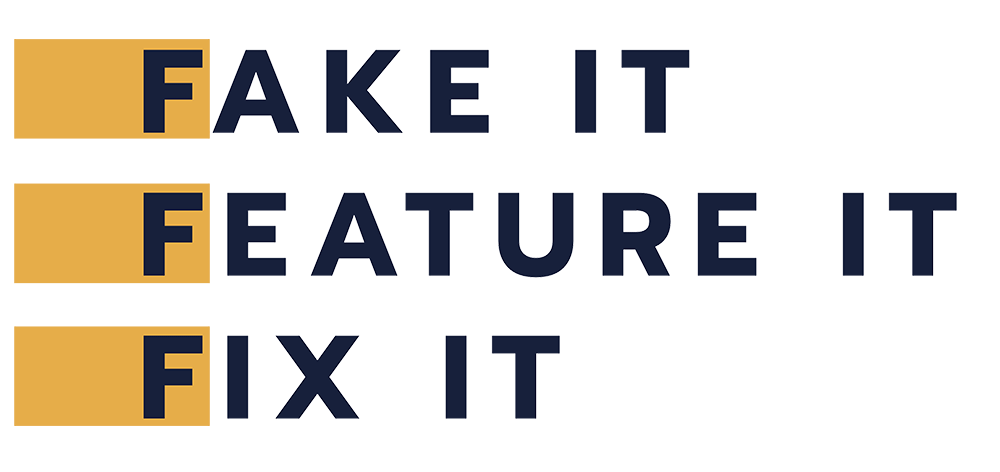
Watch a 90 second explainer.
LEARN MORE:
Want to know the philosophy behind Transparency? Watch this 2 minute explainer.
VOCAL VARIETY
WHY: Vocal variety — the musicality in the human voice — indicates both meaning (please pass the red pen) and intent (please pass the red pen!!!). It need not be learned de novo, but rather constraints must be unlearned, as humans have used the musicality of sound to communicate ideas since time immemorial.
HOW: Participants learn the importance and origin of vocal variety, and understand it using the GK Training 5 P rubric to evaluate it along the following dynamics: Pace, Pitch, Pause, Power, & Placement.
ACTIVITY: Participants map each of the P’s to the effect on an audience, as outlined in research (conducted by GK Founder Michael Hoeppner and colleagues at Columbia Business School, UCLA, Univ of Chicago, et al) on the impact of the 5 P’s on political audiences.
LEARN MORE:
What can you learn about Vocal Variety by reading to kids?
KINESTHETIC LEARNING
WHY: To achieve actual behavioral change, participants need to learn not just with their brains but with their bodies. We use kinesthetic learning and embodied cognition to build new habits that stick.
HOW: Participants learn what Kinesthetic Learning and Embodied Cognition are and why they’re important for new skill development. Participants get introduced to multiple GK proprietary kinesthetic drills for changing bad habits.
ACTIVITY: Participants learn multiple drills that address derailers like: talking too fast, monotone communication, discomfort with silence, verbosity, and filler language. Here is a sampling of drills that you can expect at your workshop.
LEARN MORE:
Watch this Keynote from Michael Chad Hoeppner (Pay attention: A cork makes a cameo).
CONTENT: THREE S's
WHY: What you say matters, especially in a world full of distractions and communication overload.
HOW: Participants learn a straightforward framework of Three S’s that make content more engaging and memorable: Succinct (What’s your main idea, stated as simply as possible?); Surprise (How are you upending your audience’s expectations?); and Story (How are you using narrative to drive home your message?).
ACTIVITY: In a rapid-fire exercise, participants apply the 3 S’s to the professional material they started with in the baseline breakout.
LEARN MORE:
Watch any of these three famous TED talks and see if you can catch all three S’s at work. (Remember, the S’s are Succinct, Surprise, and Story).
BREAKOUT 2
HOW: Learners practice the program’s lessons in breakout groups and receive individual feedback and coaching from a GK Trainer.
ACTIVITY: Each participant has a second opportunity to deliver their material from the first breakout, this time incorporating at least one Delivery skill and one Content tool. The GK Trainer provides real-time and coaching for each learner, and concludes the breakout session with high-level takeaways for the group.
HOMEWORK AND
NEXT STEPS
WHY: No matter how good a learning experience is, practice and reinforcement are needed to turn lessons into habits.
ACTIVITY: The session wraps up with a preview of the reinforcement emails each participant will receive, an introduction to GK’s interactive practice app Question Roulette (custom version), and guidance on HW. Learners are explicitly encouraged to seek out feedback from stakeholders moving forward.
CONTEXT:
Here’s a demo of the GK Practice App “Question Roulette”
VOCAL VARIETY
WHAT CAN YOU LEARN ABOUT VOCAL VARIETY BY READING TO KIDS?
ACTIVITY: Participants map each of the P’s to the effect on an audience, as outlined in research (conducted by GK Founder Michael Hoeppner and colleagues at Columbia Business School, UCLA, Univ of Chicago, et al) on the impact of the 5 Ps on political audiences.
They receive technqiues to modulate each of the 5 P’s independently and multiple kinesthetic exercises to increase vocal variety, including the GK tools Silent Storytelling, Impediment Drill, and the Four Archetypes.
TRANSPARENCY
HOW: Participants learn the Three F’s of Transparency: Fake it, Feature it, and fix it. They learn and use six essential “transparency phrases”, as well as Transparency via embodied cognition using a balancing exercise.

Watch a 90 second explainer.
3 F's In Action
ACTIVITY: After learning the alliterative 3 F’s framework, participants craft a “Transparency phrase” they can use to navigate challenges and mistakes
Using the set of Transparency cards from GK’s Conversation(TM) Card Game, participants learn and deploy 6 different GK transparency phrases, intergrate their own original one, and practice using them to navigate “mistakes”.
Participants deepen the learning with the use of Transparency cards from GK’s Conversation(TM) Card Game and add a kinesthetic exercise titled “A Mistake is not a Mistake,” in which participants are quite literally thrown off balance to instill a muscle memory experience that mistakes are only mistakes if a speaker treats them as such.
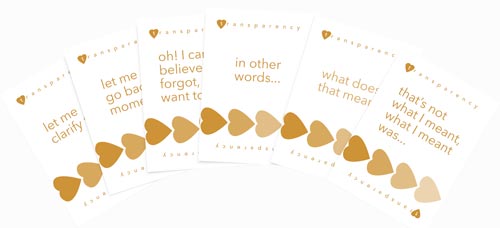
GK TRANSPARENCY CARDS
